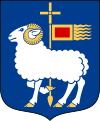 Coat of arms | |
 | |
| Geography | |
|---|---|
| Location | Baltic Sea |
| Coordinates | 57°30′N 18°30′ECoordinates: 57°30′N 18°30′E |
| Archipelago | Slite archipelago |
| Total islands | 14 large + a number of smaller islands |
| Major islands | Gotland, Fårö, Gotska Sandön, Stora Karlsö, Lilla Karlsö, Furillen |
| Area | 3,183.7 km2 (1,229.2 sq mi) |
| Length | 176 km (109.4 mi) |
| Width | 52 km (32.3 mi) |
| Coastline | 800 km (500 mi) (including Fårö) |
| Highest elevation | 82 m (269 ft) |
| Highest point | Lojsta hed |
| Administration | |
| County | Gotland County |
| Municipality | Region Gotland |
| Largest settlement | Visby (pop. 23,600[1]) |
| Demographics | |
| Population | 61,001[2] (2021) |
| Pop. density | 18.4/km2 (47.7/sq mi) |
| Official name | Gotland, east coast |
| Designated | 5 December 1974 |
| Reference no. | 21[3] |
Gotland (/ˈɡɒtlənd/, Swedish: [ˈɡɔ̌tːland] (![]() listen);[4] Gutland in Gutnish),[5] also historically spelled Gottland or Gothland (/ˈɡɒθlənd/),[6] is Sweden's largest island.[7][8][9][10] It is also a province/county (Swedish län), municipality, and diocese. The province includes the islands of Fårö and Gotska Sandön to the north, as well as the Karlsö Islands (Lilla and Stora) to the west. The population is 61,001,[2] of which about 23,600 live in Visby, the main town.[1]
Outside Visby, there are minor settlements and a mainly rural
population. The island of Gotland and the other areas of the province of
Gotland make up less than one percent of Sweden's total land area. The
county formed by the archipelago is the second smallest by area and is
the least populated in Sweden. In spite of the small size due to its
narrow width, the driving distance between the furthermost points of the
populated islands is about 170 kilometres (110 mi).[11]
listen);[4] Gutland in Gutnish),[5] also historically spelled Gottland or Gothland (/ˈɡɒθlənd/),[6] is Sweden's largest island.[7][8][9][10] It is also a province/county (Swedish län), municipality, and diocese. The province includes the islands of Fårö and Gotska Sandön to the north, as well as the Karlsö Islands (Lilla and Stora) to the west. The population is 61,001,[2] of which about 23,600 live in Visby, the main town.[1]
Outside Visby, there are minor settlements and a mainly rural
population. The island of Gotland and the other areas of the province of
Gotland make up less than one percent of Sweden's total land area. The
county formed by the archipelago is the second smallest by area and is
the least populated in Sweden. In spite of the small size due to its
narrow width, the driving distance between the furthermost points of the
populated islands is about 170 kilometres (110 mi).[11]
Gotland is a fully integrated part of Sweden with no particular autonomy, unlike several other offshore island groups in Europe. Historically there was a linguistic difference between the archipelago and the mainland with Gutnish being the native language. In recent centuries, Swedish took over almost entirely and the island is virtually monolingually Swedish in modern times. The archipelago is a very popular domestic tourist destination for mainland Swedes, with the population rising to very high numbers during summers. Among reasons include the sunny climate and the extensive shoreline on mild water. During summer Visby hosts the political event Almedalen Week followed by the Medieval Week, further boosting visitor numbers. In winter, Gotland usually remains surrounded by ice-free water and has mild weather.
Gotland has been inhabited since approximately 7200 BC.[12] The island's main sources of income are agriculture, food processing, tourism, information technology services, design, and some heavy industry such as concrete production from locally mined limestone.[13] From a military standpoint, it occupies a strategic location in the center of the Baltic Sea.
Etymology
The name of Gotland is closely related to that of the Geats and Goths.[14]
History
Prehistoric time to Viking Age
The island was the home of the Gutes, and sites such as the Ajvide Settlement show that it has been occupied since prehistory.[15] A DNA study conducted on the 5,000-year-old skeletal remains of three Middle Neolithic seal hunters from Gotland showed that they were related to modern-day Finns, while a farmer from Gökhem parish in Västergötland on the mainland was found to be more closely related to modern-day Mediterraneans. This is consistent with the spread of agricultural peoples from the Middle East at about that time.[16]
Gutasaga contains legends of how the island was settled by Þieluar and populated by his descendants. It also tells that a third of the population had to emigrate and settle in southern Europe, a tradition associated with the migration of the Goths, whose name has the same origin as Gutes, the native name of the people of the island. It later tells that the Gutes voluntarily submitted to the king of Sweden and asserts that the submission was based on mutual agreement, and notes the duties and obligations of the Swedish King and Bishop in relationship to Gotland.[17] According to some historians, it is therefore an effort not only to write down the history of Gotland, but also to assert Gotland's independence from Sweden.[18]
It gives Awair Strabain as the name of the man who arranged the mutually beneficial agreement with the king of Sweden; the event would have taken place before the end of the ninth century, when Wulfstan of Hedeby reported that the island was subject to the Swedes:
Then, after the land of the Burgundians, we had on our left the lands that have been called from the earliest times Blekingey, and Meore, and Eowland, and Gotland, all which territory is subject to the Sweons; and Weonodland was all the way on our right, as far as Weissel-mouth.[19]
The number of Arab dirhams discovered on the island of Gotland alone is astoundingly high. In the various hoards located around the island, there are more of these silver coins than at any other site in Western Eurasia. The total sum is almost as great as the number that has been unearthed in the entire Muslim world.[20] These coins moved north through trade between Rus merchants and the Abbasid Caliphate, along the Silver-Fur Road, and the money made by Scandinavian merchants would help northern Europe, especially Viking Scandinavia and the Carolingian Empire, as major commercial centers for the next several centuries.[21]
The Berezan' Runestone, discovered in 1905 in Ukraine, was made by a Varangian (Viking) trader named Grani in memory of his business partner Karl. It is assumed that they were from Gotland.[22]
Notable archaeological findings
The Mästermyr chest, an important artefact from the Viking Age, was found in Gotland.[23][24]
On 16 July 1999, the world's largest Viking silver treasure, the Spillings Hoard, was found in a field at Spillings farm northwest of Slite.[25] The silver treasure was divided into two parts weighing a total of 67 kg (148 lb) (27 kg (60 lb) and 40 kg (88 lb)) and consisted mostly of coins, about 14,000, from foreign countries, mostly Islamic.[26] It also contained about 20 kg (44 lb) of bronze objects along with numerous everyday objects such as nails, glass beads, parts of tools, pottery, iron bands and clasps. The treasure was found by using a metal detector, and the finders fee, given to the farmer who owned the land, was over 2 million kronor (about US$308,000).[27] The treasure was found almost by accident while filming a news report for TV4 about illegal treasure hunting on Gotland.[28]
Middle Ages
Early on, Gotland became a commercial center, with the town of Visby the most important Hanseatic city in the Baltic Sea.[29] In late medieval times, the island had twenty district courts (tings), each represented by its elected judge at the island-ting, called landsting. New laws were decided at the landsting, which also took other decisions regarding the island as a whole.[30]
The city of Visby and rest of the island were governed separately, and a civil war caused by conflicts between the German merchants in Visby and the peasants they traded with in the countryside had to be put down by King Magnus III of Sweden in 1288.[31] In 1361, Valdemar Atterdag of Denmark invaded the island.[32] About 1,500 Gotlandic farmers were killed by the Danish invaders after massing for the Battle of Mästerby.[33] The Victual Brothers occupied the island in 1394 to set up a stronghold as a headquarters of their own in Visby. At last, Gotland became a fief of the Teutonic Knights, awarded to them on the condition that they expel the piratical Victual Brothers from their fortified sanctuary.[30] An invading army of Teutonic Knights conquered the island in 1398, destroying Visby and driving the Victual Brothers from Gotland. In 1409, Grand Master Ulrich von Jungingen of the Teutonic Knights guaranteed peace with the Kalmar Union of Scandinavia by selling the island of Gotland to Queen Margaret of Denmark, Norway and Sweden.[30]
The authority of the landsting was successively eroded after the island was occupied by the Teutonic Order, then sold to Eric of Pomerania and after 1449 ruled by Danish governors.[30] In late medieval times, the ting consisted of twelve representatives for the farmers, free-holders or tenants.[citation needed]
Early modern period
Since the Treaty of Brömsebro in 1645, the island has remained under Swedish rule.[30][34]
On 19 September 1806, the Swedish government offered the sovereignty of Gotland to the Order of St. John of Jerusalem, who had been expelled from Malta in 1798, but the Order rejected the offer since it would have meant renouncing their claim to Malta. The Order never regained its territory, and eventually it reestablished itself in Rome as the Sovereign Military Order of Malta.[35]
On 22 April 1808, during the Finnish War between Sweden and Russia, a Russian army landed on the southeastern shores of Gotland near Grötlingbo. Under command of Nikolai Andreevich Bodisko 1,800 Russians took the city of Visby without any combat or engagement, and occupied the island. A Swedish naval force rescue expedition was sent from Karlskrona under the command of admiral Rudolf Cederström with 2,000 men; the island was liberated and the Russians capitulated. Russian forces left the island on 18 May 1808.
Administration
The traditional provinces of Sweden serve no administrative or political purposes today, but are historical and cultural entities. In the case of Gotland, however, due to its insular position, the administrative county (län), Gotland County, and the municipality (kommun), Region Gotland, both cover the same territory as the province. Furthermore, the diocese of Visby is also congruent with the province.[36][37][38] Gotland is traditionally divided into 92 sockens.[1] On 1 January 2016, they were all reconstituted into Districts, administrative areas with the same borders as the former sockens.[39]
Heraldry
Gotland was granted its arms in about 1560.[40] The coat of arms is represented with a ducal coronet. Blazon: "Azure a ram statant Argent armed Or holding on a cross-staff of the same a banner Gules bordered and with five tails of the third." The county was granted the same coat of arms in 1936. The municipality, created in 1971, uses the same picture, but with other tinctures.
The Gotlandic flag displays the Gotlandic coat of arms, white on red ground, known from the 13th century in the shape of the seal of the Gutnish Republic with the proud ram. It reads: "Gutenses signo xpistus signatur in agno".
Geography
Gotland is Sweden's largest island, and it is the largest island fully encompassed by the Baltic Sea (with Denmark's Zealand at the Baltic's edge).[7][8][9][10] With its total area of 3,183.7 km2 (1,229.2 sq mi) the island of Gotland and the other areas of the province of Gotland make up 0.8% of Sweden's total land area.[41] The province includes the small islands of Fårö and Gotska Sandön to the north, as well as the Karlsö Islands, (Lilla and Stora) to the west, which are even smaller. The island of Gotland has an area of 2,994 km2 (1,156 sq mi), whereas the province has 3,183.7 km2 (1,229.2 sq mi) [3,151 km2 (1,217 sq mi) of land excluding the lakes and rivers].[42] The population is 61,001 as of December 2021.[2] As of 2016, approximately 23,600 people (about 40% of residents) lived in Visby, which is the seat of the municipality and the capital of the county.[1]
Gotland is located about 90 km (56 mi) east of the Swedish mainland and about 130 km (81 mi) from the Baltic states, Latvia being the nearest. Gotland is the name of the main island, but the adjacent islands are generally considered part of Gotland and the Gotlandic culture:
- Furillen
- Fårö
- Gotska Sandön, a National park of Sweden
- The Karlsö Islands (Stora Karlsö and Lilla Karlsö)
- Laus holmar
- Ytterholmen
- Östergarnsholm
There are several shallow lakes located near the shores of the island. The biggest is Lake Bästeträsk, located near Fleringe in the northern part of Gotland. The Hoburg Shoal bird reserve is situated on the southern tip of the island.[43] The highest point of the island is Lojsta Hed which stands 82 m (269 ft) above sea level. The average height of the island is 29 meters.[44]
Settlements besides Visby include:
Of these, Hemse is the largest settlement in southern Gotland and along with Roma the two largest inland villages. Burgsvik is the southernmost locality and Fårösund the northernmost. The island of Fårö is permanently settled, but with only a few hundred year-round residents and lacks a permanent fixed link to the main island. Residents are depending on an around the clock, free of charge, car ferry for transportation over a strait roughly 1.3 km (0.81 mi) wide, taking about eight minutes.[45][46] Fårö may get connected to the main island with a bridge in the future, but the project has had plenty of delays related to funding.[47][48] At the closest point, the two islands are separated by less than 500 metres (1,600 ft), although that is at a distance from road connections.
Slite is the largest settlement on Gotland's sparsely populated east coast.
Climate
Gotland has a semi-continental variety of a marine climate (Cfb). This results in larger seasonal differences than typical of marine climates in spite of it being surrounded by the Baltic Sea for large distances in all directions. This is due to strong continental winds travelling over the sea from surrounding great landmasses. Seasonal temperature variation is smaller in more isolated places on the island such as Hoburgen or Östergarnsholm, having warmer autumn and winter, but are cooler during spring and summer days. Seasonal lag being exceptionally strong in the weather station Östergarnsholm. As an example, December is warmer than March with temperature lows being similar to April. August is typically the warmest month, an unusual occurrence in Swedish sites. In capital Visby, July and August temperatures tend to be quite even.
Since winters usually remain just above freezing and brackish water remaining liquid longer than freshwater, the sea remains ice-free all year round, except during rare extreme cold waves. The last time the whole passage from the mainland to Gotland froze was in 1987 when icebreakers were used to maintain passenger and goods traffic to the island.[49]
| Climate data for Visby Airport (2002–2020 averages, extremes since 1901) |
|---|
| Climate data for Visby | |||||||||||||
|---|---|---|---|---|---|---|---|---|---|---|---|---|---|
| Month | Jan | Feb | Mar | Apr | May | Jun | Jul | Aug | Sep | Oct | Nov | Dec | Year |
| Source: Weather Atlas[52] | |||||||||||||
| Climate data for Fårösund (2002–2020 averages, extremes since 1995) |
|---|
| Climate data for Hemse (2002–2020 averages, extremes since 1945) |
|---|
Geology
Gotland is made up of a sequence of sedimentary rocks of a Silurian age, dipping to the south-east. The main Silurian succession of limestones and shales comprises thirteen units spanning 200 to 500 m (660 to 1,640 ft) of stratigraphic thickness, being thickest in the south, and overlies a 75 to 125 m (246 to 410 ft) thick Ordovician sequence.[57]
It was deposited in a shallow, hot, and salty sea on the edge of an equatorial continent.[58] The water depth never exceeded 175 to 200 m (574 to 656 ft),[59] and became shallower over time as bioherm detritus and terrestrial sediments filled the basin. Reef growth started in the Llandovery, when the sea was 50 to 100 m (160 to 330 ft), and reefs continued to dominate the sedimentary record.[57] Some sandstones are present in the youngest rocks towards the south of the island, which represent sand bars deposited very close to the shoreline.[60]
The lime rocks have been weathered into characteristic karstic rock formations known as rauks. Fossils, mainly of crinoids, rugose corals and brachiopods, are abundant throughout the island; palæo-sea-stacks are preserved in places.[61]
Economy
The island's main sources of income are agriculture along with food processing, tourism, IT solutions, design and some heavy industry such as concrete production from locally mined limestone. Most of Gotland's economy is based on small scale production.[62] In 2012, there were over 7,500 registered companies on Gotland.[63] 1,500 of these had more than one employee.[13] Gotland has the world's northernmost established vineyard and winery, located in Hablingbo.[64][65]
| Gotlands largest employers in 2015[66] |
|---|
Military
Gotland occupies a strategic location in the Baltic sea from a defence viewpoint. In March 2015, the Swedish government decided to begin reestablishing a permanent military presence on Gotland, starting with an initial 150 troop garrison,[67] consisting primarily of elements from the Swedish Army. It has been reported that the bulk of this initial garrison will make up a new motorised rifle battalion,[68] alternatively referred to in other reports as a "modular-structured rapid response Army battalion". A later report claimed that plans were at an advanced stage for a support helicopter squadron and an Air Force "fast response Gripen jet squadron" to also be based on the island to support the new garrison and further reinforce the defences.[69] Prior to the disbandment of the original garrison, there had been a continuous Swedish military presence on Gotland in one form or another, for nearly 200 years.[70]
After the standing down of the original garrison, a battalion of the Swedish Home Guard is based on Gotland for emergencies as part of the Eastern Military Region (MR E). The unit, 32:a Gotlandsbataljonen (the 32nd Gotland battalion), acts as a reserve component of the Swedish Amphibious Corps.[71] Among the residual war reserve stocks reported to be still in storage on Gotland in March 2015, were 14 tanks[72] (Stridsvagn 122s) at the Tofta skjutfält (the Tofta firing range),[73][74] but without any crews or dedicated maintenance personnel assigned to them.[75]
Gotland currently has no local air defence capability.[76] Despite its importance as a naval base in the past,[77] as of 2004, there are no naval units based on Gotland.[76] The Tofta firing range itself (also known as the Tofta Tank firing range), is a military training ground which is located 8 km (5.0 mi) south of Visby. Another less common name for the range is the Toftasjön firing range. Tracing its origins back to 1898, as of 2008 the range extended over 2,700 acres (11 km2). It was a major training and storage facility for the Gotland garrison during its existence, and was still occasionally used for training by various elements of the Armed Forces since the garrison was shut down in 2005. However, from the second half of 2014 onwards, there has been a marked increase in the use of the range, especially by armored units (mostly company sized),[74] as tensions in Northeastern Europe have escalated. At least one of the buildings on the range, the former tank repair shop, is currently owned by a private company (Peab), with the military renting back the top floor for its own use.[75] When not used by the military, a number of cultural and sports events have been held at the range, one of the most notable being the Gotland Grand National, the world's largest enduro race.[78] As of 2018, Gotland has received a lot more attention military-wise and has seen a much larger spending on the military. As of 2018, the Gotland Regiment has been re-raised and is the first time since World War II that a new regiment has been established in Sweden.
Tourism
The first modern day tourists came to Gotland during the 19th century and were known as "bathers".[79] Gotland became very popular with socialites at the time through Princess Eugenie who lived in Västerhejde, in the west part of the island from the 1860s.[80][81]
When a new law ensuring two weeks vacation for all employees in Sweden was passed in 1938, camping became a popular pastime among the Swedes, and in 1955, Gotland was visited by 80,000 people.[81] In the 1970s mostly young people were attracted to Gotland. Since 2010 the island has become a more versatile vacation spot visited by people from all over the world, in all manner of ways.[81]
In 2001, it was the fifth largest tourist destination in Sweden based on the total number of guest nights.[82] Gotland is usually the part of Sweden which receives the most hours of sunlight during a year with Visby statistically the location with the most sunshine in Sweden.[83] In 2007 approximately 750,000 people visited Gotland.[13]
In 1996, for the first time, ferries between Gotland and mainland Sweden carried more than 1 million passengers in a year. In 2007, the number of passengers exceeded 1.5 million.[84] In 2012, the ferries had 1,590,271 passengers and the airlines 327,255 passengers.[85] Even during the COVID-19 pandemic tourism did not change much as Swedes chose to visit the island instead of travelling abroad.[86]
| Number of tourists from top five countries in 2012[87] |
|---|
Cruise ships and new pier
The main port of call on Gotland is Visby. The city is visited by a number of cruise ships every year.[89][90] About 40 cruise lines frequent the Baltic sea with Visby as one of their destinations.[91] In 2005, 147 ships docked at Visby, in 2010 the number was 69.[92] In 2014, 62 ships are scheduled to visit Visby.[93] The decrease in visiting ships is due to the fact that the modern cruise ships are too large to enter Visby harbor.[92] Ships must anchor a fair distance from shore whereupon passengers are shuttled to shore in small boats, which is not possible during bad weather.[94] In 2007, the first proposition for building a new pier at Visby harbor, large enough to serve the modern cruise ships, was made.[95] In 2011, the matter of the new pier was discussed in the Riksdag[96] and in 2012 research and planning for the pier began.[92] In January 2014, a letter of intent for building a new cruise pier in Visby harbor was signed by Region Gotland and Copenhagen Malmö Port (CMP). The pier is scheduled to be finished in 2018. The estimated cost is 250 million crowns (about US$38.52 million).[97][98]
Culture
A number of stones with grooves exist on Gotland. Archaeologists interpret these grooves as traces of an unknown industrial process in the High Middle Ages. There are approximately 3,700 grinding grooves, of which about 750 occur in the solid limestone outcrop and the rest in other rock formations. The latter often consist of hard rocks such as granite or gneiss, but also soft rocks such as sandstone occur.[99] Grinding grooves are also found in Skåne, in southern Sweden and in Finland. Astronomer Göran Henriksson dates a number of these grinding grooves to the Stone Age, from c. 3300 BCE to c. 2000 BCE, based on astronomical alignments,[100] although his methodology has been heavily criticized.[101]
The Medieval town of Visby has been entered as a site of the UNESCO World heritage programme. An impressive feature of Visby is the fortress wall that surrounds the old city, dating from the 13th century.[102]
Many of the residents still speak Gutnish (Gutamål), the autochthonous language on the islands. But most of them now speak Gotlandic (Swedish: gotländska), a Gutnish-influenced Swedish dialect.[103] In the 13th century, a work containing the laws of the island, called "the Gotlandic law" (Gutalagen), was published in Old Gutnish, as well as the Gutasaga.[104]
Gotland is noted for its 94 Medieval churches,[105] most of which are restored and in active use. These churches exhibit two major styles of architecture: Romanesque and Gothic. The older churches were constructed in the Romanesque style from 1150 to 1250. The newer churches were constructed in the Gothic architectural style that prevailed from about 1250–1400. The oldest painting inside one of the churches on Gotland stretches as far back in time as the 12th century.[106]
Traditional games of skill like Kubb, Pärk, and Varpa are played on Gotland. They are part of what has become called "Gutniska Lekar", and are performed preferably on the Midsummer's Eve celebration on the island, but also throughout the summer months. The games have widespread renown; some of them are played by people as far away as in the United States.[107]
The knotwork design subsequently named the "Valknut" has the most attested historic instances on picture stones in Gotland, which include being on both the Stora Hammars I and the Tängelgårda stones.[108] Gotland also has a rich heritage of folklore, including myths about the bysen, Di sma undar jordi, Hoburgsgubben and the Martebo lights.[109][110]
Gotland gives its name to the traditional farmhouse ale Gotlandsdricka, a turbid beer with much in common with Finnish sahti, and related beers from the Baltic states.[111]
Notable people
There are a number of notable people born or living on Gotland, or in other major ways associated with the island.[112]
Sport
Events
- Gotland competes in the biennial Island Games, which it hosted in 1999 and 2017.[113][114]
- Round Gotland Race-sailing event ("ÅF Offshore Race") starting at Stockholm, around the island of Gotland and back.[115]
- Gotland Grand National (GGN) is an annual enduro race on Gotland. GGN is a part of the Swedish enduroklassikern (enduro classics, Ränneslättsloppet, Stångebroslaget and Gotland Grand National). GNN is the world's largest enduro race.[116][117]
- Stånga Games are annual games for Gotlandic sports. The games are held during five days each summer in Stånga. The games are unofficially called "the Gotland Olympic Games". Some of the sports at the Stånga Games are pärk, varpa and caber toss.[107]
Organizations
In 2012, there were 171 registered sports organizations on Gotland.[118]
Gotland has two senior women's sport teams playing in the first tiers: basketball team Visby Ladies Basket Club (in Basketligan dam) and floorball team Endre IF (in the Swedish Super League).[119][120] Visby Ladies won the Swedish Championship in 2005.[121]
Football in the province is administered by Gotlands Fotbollförbund. The leading football club is FC Gute, playing in the fourth-tier league Division 2 as of 2014.[122]
Visby/Roma HK is a hockey club located in Visby, currently playing in group East of Hockeyettan.[123]
In popular culture
The Long Ships, or Red Orm (original title: Röde Orm), a best-selling Swedish novel written by Frans G. Bengtsson, contains a vivid description of Gotland in the Viking Age. A section of the book is devoted to a Viking ship setting out to Russia, stopping on its way at Gotland and engaging a pilot from the island who plays an important part in their voyage. Gotlanders of the Viking era are depicted as city people, more sophisticated and cosmopolitan than other Scandinavians of their time, and proud of their knowledge and skills.
Naomi Mitchison, in her autobiographic book "You may well ask", relates an experience during a walking tour in Sweden: "Over in Gotland I walked again, further than I would have if I had realized that the milestones were in old Swedish miles, so that my disappointing three-mile walk along the cold sea edge under the strange ancient fortifications was really fifteen English miles [24 km]".[124]
The crime novels of Mari Jungstedt, featuring Detective Superintendent Anders Knutas, are set on Gotland.
In the Battlefield Vietnam video game modification Invasion Gotland, the Soviet Union invades Gotland in 1977.
For the 1989 Studio Ghibli film, Kiki's Delivery Service, by Hayao Miyazaki, he and other illustrators spent time in Gotland in preparation for animation.
Astronomy
A number of asteroids in the main-belt are named after places on Gotland or Gotlanders, such as 10795 Babben, 3250 Martebo and 7545 Smaklösa. Most of them have been named by Swedish astronomer Claes-Ingvar Lagerkvist, a summer resident on Gotland. All the Gotlandic names are vividly described in NASA's JPL Small-Body Database in connection to each asteroid.[125][126]
See also
References
Number of permanent employees stationed on the island
- Joelsson, Johan (2014). "Vem döper stjärnorna?" [Who is naming the stars?]. www.spraktidningen.se. Språktidningen. Archived from the original on 1 July 2016. Retrieved 25 June 2016.
Further reading
There are over 8,700 titles about Gotland in the National Library of Sweden online database LIBRIS. About 560 of the books are in English. See: LIBRIS.
External links
- . Encyclopædia Britannica. Vol. 12 (11th ed.). 1911.
- . New International Encyclopedia. 1905.
- Gotland, facts and statistics 2013, pdf, Gotland County. (in English)
- Important years in Gotland' s history GotslandsResor tourist website (in English)
- Official portal for Gotland County (in Swedish)
- Gotland administrative portal (in Swedish)
- Swedish Radio on Gotland, P4 (in Swedish)
- Portal on Gotland with detailed facts about everything on the island (in Swedish)
- Commercial portal on Gotland (in Swedish)
- Official Gotland Tourist Association (in Swedish)
- Famous footprints – traveling on Gotland (in English)
- Portal for eastern Gotland – Östergarnslandet (in Swedish)
- Portal for eastern Gotland – Ljugarn Archived 12 February 2015 at the Wayback Machine (in Swedish)
- Gotland (in Interlingua)
- Interactive map of Gotland (in Swedish)
- A short video (with music) with footage of the Gotland Grand National 2007
- Gotland Grand National (GGN) webpage Archived 24 August 2014 at the Wayback Machine (Nordic Sport & Event)
https://en.wikipedia.org/wiki/Gotland
Götaland | |
|---|---|
 | |
| Coordinates: 57°39′N 14°41′ECoordinates: 57°39′N 14°41′E | |
| Population (31 December 2021)[1] | |
| • Total | 4,995,764 |
| Time zone | UTC+1 (CET) |
| • Summer (DST) | UTC+2 (CEST) |
Götaland (Swedish: [ˈjø̂ːtaˌland] (![]() listen); also Geatland, Gothia, Gothland,[2][3] Gothenland or Gautland) is one of three lands of Sweden and comprises ten provinces. Geographically it is located in the south of Sweden, bounded to the north by Svealand, with the deep woods of Tiveden, Tylöskog and Kolmården marking the border.
listen); also Geatland, Gothia, Gothland,[2][3] Gothenland or Gautland) is one of three lands of Sweden and comprises ten provinces. Geographically it is located in the south of Sweden, bounded to the north by Svealand, with the deep woods of Tiveden, Tylöskog and Kolmården marking the border.
Götaland once consisted of petty kingdoms, and their inhabitants were called Gautar in Old Norse. However, the term mainly referred to the population of modern Västergötland. It is agreed that these were the same as the Geats, the people of the hero Beowulf in England's national epic, Beowulf.
The modern state of Sweden started forming when some provinces of Götaland gradually became more and more politically intertwined with those of Svealand. This process can be traced back to at least the 11th century, and would continue for several hundred years. Other parts of modern Götaland were at that time either Danish or Norwegian. The province of Småland, with the historically important city Kalmar on its coast, was sparsely populated and the status of the Baltic island Gotland varied during the Middle Ages. Bohuslän became Swedish first during the 17th century after being lost from Norway, around the same time as Denmark lost Scania, Halland and Blekinge to Sweden.
Etymology
The earliest possible mentions of the götar is by the 2nd-century geographer Ptolemy, who mentions the Goutai (Γούται in Greek). Later, the Anglo-Saxon epic Beowulf (8th–11th century) is partly set among the Gēatas. Norwegian and Icelandic sources sometimes use Gautar only for the people of Västergötland, but sometimes as a common ethnic term for the people of both Västergötland and Östergötland.[6] Västergötland appears in medieval Icelandic and Norwegian sources as Gautland (Götland), a form which is not etymologically identical to Götaland.
The name Götaland replaced the old Götland in the 15th century, and it was probably to distinguish the wider region it denoted from the traditional heartland in Västergötland.[7] The name Götaland probably originally referred only to Västergötland and Östergötland, but was later extended to adjoining districts. The name Götaland is possibly a plural construction and means the "lands of the Geats", where Göta- is the genitive plural of the ethnonym Göt (Geat). The interpretation that the neuter noun -land is a plural and not a singular noun is indicated by Bo Jonsson Grip's will in 1384, where he stated that he donated property in Swerige (Sweden, i.e. Svealand), Österlandom (Finland) and in Göthalandom to monasteries. Here Götaland appears in the plural form of the dative case.[6]
For the etymology of the element Geat/Gaut/Göt and Goth, see Geat.
History
Västergötland and Östergötland, once rival kingdoms themselves, constitute Götaland proper. The Geatish kings, however, belong to the domain of Norse mythology. Both Västergötland and Östergötland have large agricultural areas. It was along the coasts and at the agricultural areas as people settled down, villages and towns grew up and the population grew fastest. The large river Göta Älv drains the third largest lake in Europe, Lake Vänern. At its mouth (where Gothenburg emerged during the earlier part of the 17th century) the population in Västergötland had rights to reach the Kattegat sea. Otherwise the Göta Älv estuary was the border between the Kingdoms of Norway and Denmark.
Geatland is the land in which the medieval hero of the poem Beowulf is said to have lived.
It was only late in the Middle Ages that Götaland began to be perceived as a part of Sweden. In Old Norse and in Old English sources, Gautland/Geatland is still treated as a separate country from Sweden. In Sögubrot af Nokkrum for instance, Kolmården between Svealand and Östergötland is described as the border between Sweden and Ostrogothia (...Kolmerkr, er skilr Svíþjóð ok Eystra-Gautland...), and in Hervarar saga, King Ingold I rides to Sweden through Östergötland: Ingi konungr fór með hirð sína ok sveit nokkura ok hafði lítinn her. Hann reið austr um Smáland ok í eystra Gautland ok svá í Svíþjóð. In 1384 Bo Jonsson (Grip) stated in his will that the kingdom consisted of Swerige (Sweden, i.e. Svealand), Österland (i.e. Finland) and Göthaland (i.e. Götaland, as of the 1384 borders).
The small countries to the south – Finnveden, Kind, Möre, Njudung, Tjust, Tveta, Värend, and Ydre[citation needed] – were merged into the province of Småland (literally: [the] "small lands"). Off the coast of Småland was the island of Öland, which became a separate province. Dal to the north west became the province of Dalsland.
Småland, Öland and Dalsland were already seen as lands belonging to Götaland during the Scandinavian Middle Ages (12th–15th century).
Småland was full of deep coniferous forest, especially in the south, and of lesser importance to Götaland compared to the agricultural areas in Västergötland and Östergötland. But on its Baltic Sea coast lay the important town of Kalmar. In 1397, the Kalmar Union was proclaimed at Kalmar Castle, a personal union of the three countries of Sweden, Denmark and Norway under one King – or initially one Queen, as Queen Margaret I became the first sovereign of this, the largest ever of Scandinavian states.[8][9]
In the Treaty of Roskilde (1658), the kingdom of Denmark-Norway ceded the Danish provinces of Blekinge, Halland, Scania, and Norwegian province of Bohuslän to Sweden. These provinces are since then counted as parts of Götaland.
The island of Gotland shifted allegiance between the Swedes and the Danes several times. Although the island may be perceived to have closer links to Svealand, it is counted as part of Götaland.
Värmland originally belonged to the Göta Court of Appeal, but the province changed to become part of the Court of Appeal for Svealand for a period of time in the early 19th century.
Provinces and counties
Today, Götaland has no administrative function and is thus an unofficial entity, but it is generally considered to be one of three Swedish lands or parts. It is made up of ten provinces, based loosely on the area originally under the jurisdiction of the Göta Court of Appeals (established in 1634), to which the Scanian lands, Gotland and Bohuslän were added in 1658–79:
Administratively, Sweden is not divided into provinces but into counties (see Län). Although Götaland is defined in terms of the historical provinces and not the counties, it roughly comprises the modern counties of Blekinge, Gotland, Halland, Jönköping, Kalmar, Kronoberg, Östergötland, Scania and Västra Götaland.
Geography
Deep forests are found in the Småland province, there is plenty of farmland in Skåne, and a little bit of both in Västergötland and Östergötland. Coasts are usually relatively flat and consist of archipelagoes as well as sandy beaches. The two largest islands of Sweden are included in Götaland. The two largest lakes of Sweden are also situated mainly in Götaland. The total area is 87,712 km2 with about 4.4 million inhabitants including the second and third largest urban areas of Sweden.
Map gallery
Gothia, Sweden, in 1635 (yellow outline), bordering Danish Scanian lands to the south and southwest (red outline), and Norway to the west (green outline). Note the inclusion of Värmland.
Map of Sweden's three historical lands, the former Swedish province Österland in Finland, and the former historical land of Denmark (Skåneland) in southern Sweden. In the map, the lands have their most recent borders.
See also
Notes
- Earenfight, Theresa (2013). Queenship in Medieval Europe. Palgrave Macmillan. p. 238. ISBN 9781137303929.[permanent dead link]
External links
 Media related to Götaland at Wikimedia Commons
Media related to Götaland at Wikimedia Commons



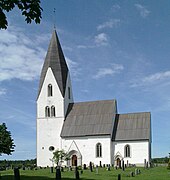

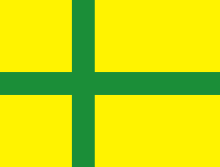

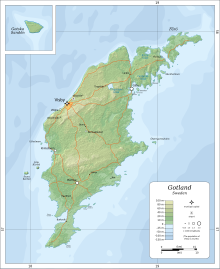







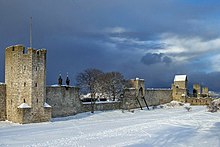

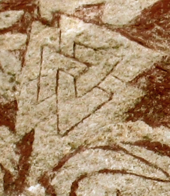

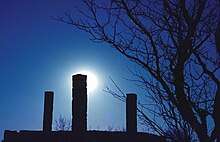







No comments:
Post a Comment